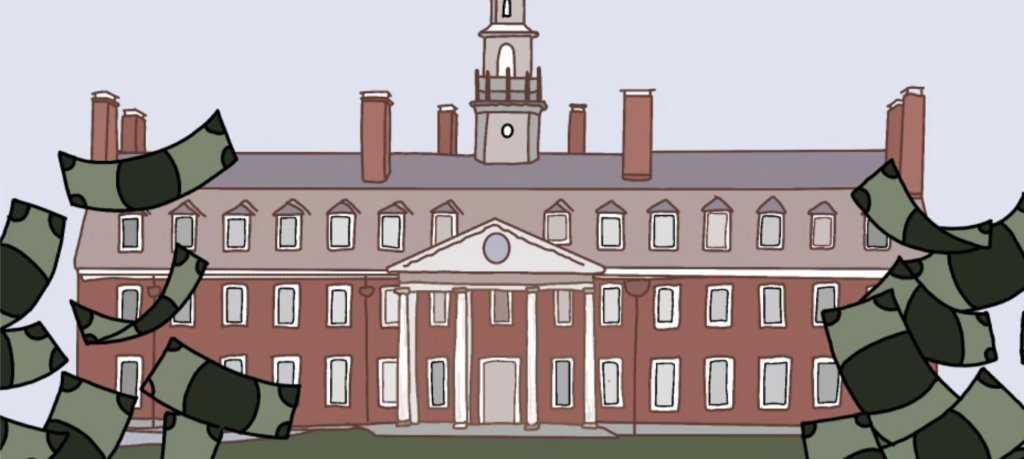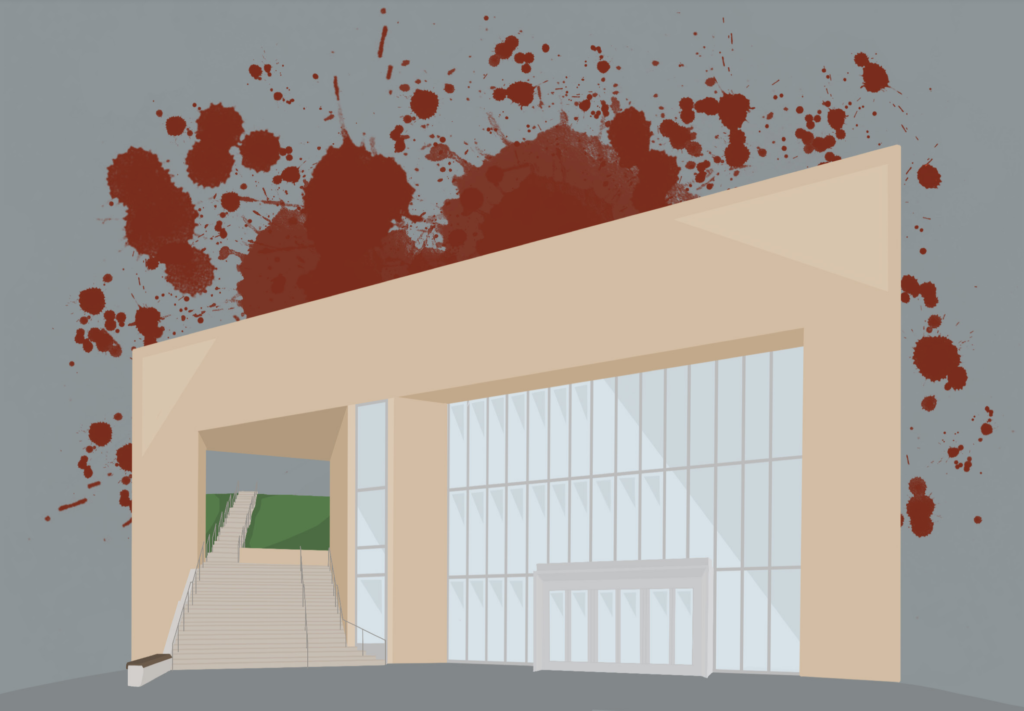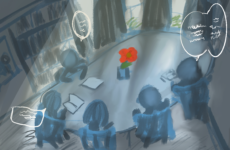
Graphic by Xyla Kiang ’26 and Eliana Li ’26/The Choate News
By Steven Kee ’27
Over the past decade, Choate has erected three new buildings: the Kohler Environmental Center (KEC), Colony Hall, and the Lanphier Center. These facilities had a combined construction cost of $87 million, with more projects, such as Carr Hall, to come. Upon hearing these figures, concern naturally arises regarding the correlation between annual increases in tuition fees and the cost of these projects. Some may wonder whether Choate should lower tuition fees rather than continue developing new projects, while others may question why a Choate education is so expensive. However, Choate’s financial picture has numerous layers that demonstrate fiscal responsibility and fair pricing which members of the Choate community fail to recognize.
According to Chief Financial Officer Mr. Patrick Durbin, all new construction projects are funded entirely through donations, not tuition fees or the endowment fund. “0% comes from tuition and fees, so there’s no, really, link between tuition and fees or the annual increase in tuition and fees to projects,” Mr. Durbin said. The contributions from donors are classified as “capital gifts” and are separate from the endowment. As none of the funds for construction are derived from student tuition, worries regarding tuition increases for new projects are unfounded. Remarkably, Choate can build impactful projects such as Carr Hall and Colony Hall without ever affecting the cost of tuition or other school expenses.
Although this is the case, Choate’s tuition is still expensive, and it’s fair to ask whether donations can be used to slow the pace of increasing tuition instead of constructing new buildings. However, Choate would not have buildings such as Colony Hall or the KEC if funding for new projects were diverted to lowering Choate’s tuition. Imagine a music program without the auditorium in Colony Hall or an environmental science program without the KEC. Buildings like Colony Hall, the Paul Mellon Arts Center, Lanphier Center, and other top-of-the-line facilities all form the core of the Choate experience. If these facilities did not exist, a Choate education would be nowhere near its current quality.
Given Choate’s position as a constantly progressing and evolving school often ranked as one of the best in America, it is logical that the School is at the forefront of innovation and continues developing new facilities to provide the best possible education for its students. As such, when donations are earmarked for new building projects, they must be spent as such, as these uses promote the best interest of students.
An important question persists: why is Choate’s tuition so expensive if money for new projects doesn’t come from tuition? Despite the seemingly hefty tuition fee, the costs are responsibly set, considering what students get in return. In fact, students actually aren’t paying enough tuition to cover the total cost of a Choate education. Tuition only covers around 55% of Choate’s operating budget. To fund the deficit, Choate uses around 4.5% of the endowment annually to continue its operations. When funds from the endowment run out, money from the annual fund, another donation fund, can also be tapped.
If Choate were to fully rely on tuition fees to operate, tuition would have to rise to almost double its current amount — from $69,370 to around $126,127 annually. In reality, Choate students get a lot more than they are paying for, as they only pay for slightly more than half of what their actual education costs. Given this disparity, the current tuition fees are warranted, but they also highlight the true cost of a Choate education.
Annual tuition increases at Choate have also been reasonable. The average year-on-year tuition increase was 2.93% over the past ten years — a smaller figure than our peer schools and similar to the national average.
Considering that inflation does play a role in rising tuition costs, Choate adjusts increases appropriately and considers other factors that may affect affordability. At the peak of the Covid-19 pandemic in fiscal year 2022, tuition increase was limited to 1.95%.
Only when the economy began to recover in fiscal year 2024 did tuition growth rise to 3.95%. Choate adjusts the rate of these increases based on students’ financial situation, ensuring that tuition remains reasonably priced. Mr. Durbin emphasized that maintaining a 2.93% average increase is important to the Board of Trustees and the Administration to maintain affordability. Without the prudent financial planning of the Administration, tuition would undoubtedly balloon to extremity during economic downturns, and tuition would be far beyond its current cost.
Additionally, Choate actively tries to slow increases in tuition by creating additional income. The School generates revenue by renting out fields, running Choate Summer Programs, and collecting other revenues that are used to lower tuition. “We’re always looking to [use] those other revenue sources so we can try to keep tuition as low as possible,” Mr. Durbin explained. In essence, Choate is always looking for ways to act in its students’ best interests, ensuring that tuition increases are financially manageable. Given these efforts, it would be wrong to accuse the Administration of inaction when it comes to protecting the wallets of Choate families.
Choate’s approach to tuition fees and developing new projects is justified and reasonable. Contributions from donors are the sole reason why Choate students have access to unparalleled facilities that are integral to the Choate experience. Additionally, tuition itself is low relative to the value of the student’s education, and the School does its best to lower annual tuition increases, ensuring that student needs are appropriately reflected in the cost of attendance. Given this often unseen reality, it is clear that Choate benefits its students by providing the highest quality of education while ensuring that tuition doesn’t become an obstacle.




